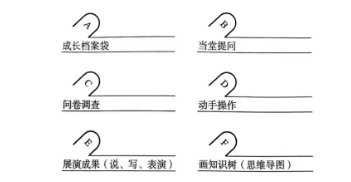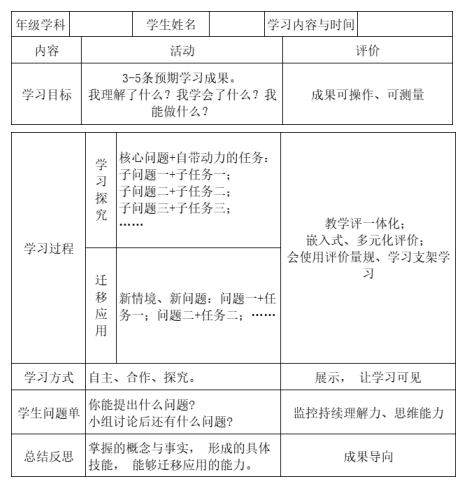

Source | Thinking Intelligence (ID: swzhihui)
Author | XU Jie, Director of Shandong Provincial Center for Basic Education Curriculum Research

In visual teaching, the importance of embedded assessment is self-evident. First, it helps teachers grasp students’ learning progress and difficulties more accurately. By analyzing the data generated by students during the learning process, teachers can understand which knowledge points students have mastered well and which need reinforcement, thus adjusting teaching strategies to achieve personalized teaching.
Secondly, embedded assessment can stimulate students’ interest and initiative in learning. Through immediate feedback, students can clearly see their learning achievements and shortcomings, thus motivating them to continue learning. At the same time, this assessment method also encourages students to self-reflect, cultivating their autonomous learning ability.
The following will analyze how to design embedded assessment to assist teachers in conducting classroom teaching based on big concepts and implementing competency development.


Teaching assessment is an important guarantee for improving the quality of classroom teaching, and it is also the weak link in classroom teaching. When implementing classroom assessment, attention should be paid to the following issues, as they often lead to the difficulty of visualizing students’ learning.
01. No diagnostic assessment before teaching, no assessment during class
For example, a teacher asked students to describe the specialty of their hometown in the last 10 minutes of the class on “The Duck Egg of the Dragon Boat Festival”. After students wrote independently, the class ended without conducting any assessment. Students do not know whether they wrote well or poorly, what the problems are, or how to revise. The next class also did not conduct any assessment, and it just ended there.
02. Vague assessment with no guidance value
After students answered questions, the teacher commented, “Great!” “Good job!” “You are so smart!” Such vague assessments are not absolutely prohibited, but if used frequently, what is the effect?
When saying great, specify what is great; when saying good, specify what is good. For example, in classical Chinese translation, did the student accurately translate the key words, or did they translate the function words correctly, or was the special sentence structure translated smoothly? Assessments should be specific and clear, so that students understand their learning.
03. Misalignment, lack of targeted assessment, and light goal achievement assessment
In assessment, it is essential to closely link learning objectives, target learning conditions, and focus on individual differences among students. Different evaluation requirements can be set for students of different levels.
04. Bias, lack of process evaluation
There is no evaluation targeting emotional attitudes and values.Strengthen process evaluation, and pay attention to the comprehensiveness of the assessment.
05. Teachers and students are unclear about the assessment criteria
Either the teacher knows the assessment criteria, but the students do not.The assessment criteria must come first, and this should be designed first in the teaching design.
06. Over-reliance on paper-and-pencil tests, single assessment methods
In teaching, apart from the common assessment method of paper-and-pencil testing, diverse assessment methods can be adopted (as shown in the figure below).



Whether it is integrated teaching assessment, backward design, or teaching design with understanding first, all emphasize the importance of embedded assessment.
01. Embedded assessment is key to promoting classroom visualization
Embedded assessment allows “evaluation” to run through the entire process, making “learning” visible. The premise is that teachers should design assessment rubrics for students (as detailed later), and provide students with preview sheets.
“Students use learning sheet templates” (see the table below) primarily focuses on teaching based on big concepts, oriented towards expected learning outcomes, driven by core questions and task-based or self-driven tasks, and secured by assessment.

In the learning sheets provided to students, teachers do not need to include big concepts in the design. This is because, depending on the learning situation and content, big concepts may sometimes be explicitly communicated to students, while at other times it is unnecessary to tell students, especially for younger students.
However, when teachers design learning objectives, core questions, performance tasks, and embedded assessments for students, they are all centered around big concepts to promote students’ lasting understanding of these concepts.
02. Embedded assessment can monitor teaching effectiveness in real-time
Teachers should be adept at implementing embedded assessments, providing timely follow-ups, constantly monitoring, and providing timely corrections to ensure teaching effectiveness. The following is an evaluation rubric designed for students learning classical Chinese text “The Wolf” during the reading segment:
1. Able to pronounce words correctly +1;
2. Appropriate intonation and voice modulation +1;
3. Accurate expression of tone +2;
4. Able to identify and correct others’ reading deficiencies +2.
The evaluation rubric is a descriptive scoring scale that lists a series of assessment criteria for a specific task, aimed at analyzing students’ learning outcomes, including learning products and processes.
As a scoring tool, it serves as an important bridge connecting teaching and assessment. In particular, the rubric effectively evaluates students’ capabilities, emotional attitudes, and learning outcomes, which are often not reflected in traditional paper-and-pencil tests.
The evaluation rubric consists of evaluation elements, indicators, weights, and descriptive levels, but these are not mandatory, and its format can vary widely. The “commonly used evaluation rubric templates” are shown in the table below:

Regarding evaluation indicators, teachers can design different weights for these indicators based on the different teaching focuses;
Measurement levels, indicating the level of students in completing tasks;
Evaluation criteria, explaining the behavioral characteristics of each measurement level.
03. Six Steps to Design Embedded Assessment Rubrics
For the commonly used evaluation tool of assessment rubrics, here we will focus on its design steps:
Step 1: Determine the content of teaching assessment based on curriculum standards, teaching materials, and learning conditions.
Step 2: Identify the indicators that need to be assessed, and ensure that the indicator categories are clear and precise.
Step 3: Determine the weights of each assessment indicator, which can sometimes be omitted. This mainly involves determining the weights of each indicator in the assessment system based on their importance. For example, the formative evaluation of teaching outcomes can be divided into four aspects, with weights assigned based on importance, which is the weight of the primary indicators, followed by the weights of secondary and tertiary indicators.
Step 4:Provide qualitative descriptions or quantitative values for each assessed indicator.
Qualitative standards refer to standards that use language or characters as scales. Scales refer to the unit standards for measuring the evaluated object. Standards can be expressed as excellent, good, average, poor, or very good, good, fair, not so good (to be improved), etc.
Quantitative standards are the most basic standards in teaching assessment, referring to standards that use numbers (or scores) as scales, such as 10 points, 8 points, 6 points, 4 points, etc.
When designing the evaluation standards for teaching design, reference can be made to the requirements of various subject curriculum standards and teaching materials (such as academic standards). The language describing the standards should be as specific and clear as possible, especially for younger students, where efforts should be made to ensure that students understand the specific requirements of the assessment.
When determining the standards, one can first describe the highest indicators, then describe the lowest standards, and then divide the middle parts into different levels, referring to the evaluation requirements of both ends to describe the requirements of different levels in the middle part, ensuring a certain degree of differentiation.
Step 5: Solicit opinions on the initially drafted assessment rubric. The objects of opinion solicitation include colleagues, students, parents, experts, etc.
Step 6: Continuously improve the assessment rubric during its use.
The assessment rubric is continuously improved dynamically, being revised and perfected based on feedback during its application. A good assessment rubric serves as a strong learning scaffold for students’ learning.
For instance, the embedded assessment rubric occurs simultaneously with the teacher’s teaching and the students’ learning activities, integrating assessment into the entire teaching process, making assessment a driving force for promoting and advancing learning. The evaluation guide for the high school history theme “The Internal and External Troubles of the Late Qing Dynasty and the Preservation of National Survival” serves as an excellent learning scaffold (as shown in the table below).

Providing rubrics before thematic research or unit learning serves as a blueprint for students’ future learning objectives.
Rubrics can be holistic, providing students with a total score composed of multiple subjective standards, or analytic, clearly indicating the distribution of scores under different standards and how to weight different standards (as shown in the table below).


04. Ensure that the design of the assessment rubric is scientific and reasonable
The main indicators of the assessment rubric should be closely linked to learning objectives, especially targeting learning difficulties and key points, which is a key aspect of rubric creation. It is recommended to carefully consider each content in the “design assessment rubric” when developing the rubric to ensure the quality of the designed rubric.
Whether the design of an assessment rubric is scientific and reasonable can be evaluated using the “design assessment rubric” (as shown in the table below).



Source | Thinking Intelligence (ID: swzhihui). Thinking Intelligence is dedicated to thinking education, carefully selecting valuable content covering thinking, educational psychology, and brain science, creating a platform for educational thinking collision, and providing educators with a different perspective.
Author | XU Jie, Director of Shandong Provincial Center for Basic Education Curriculum Research
Statement | The above images and text are valuable for sharing, and the copyright belongs to the original author and source. If there are issues regarding copyright, please contact us in a timely manner.
